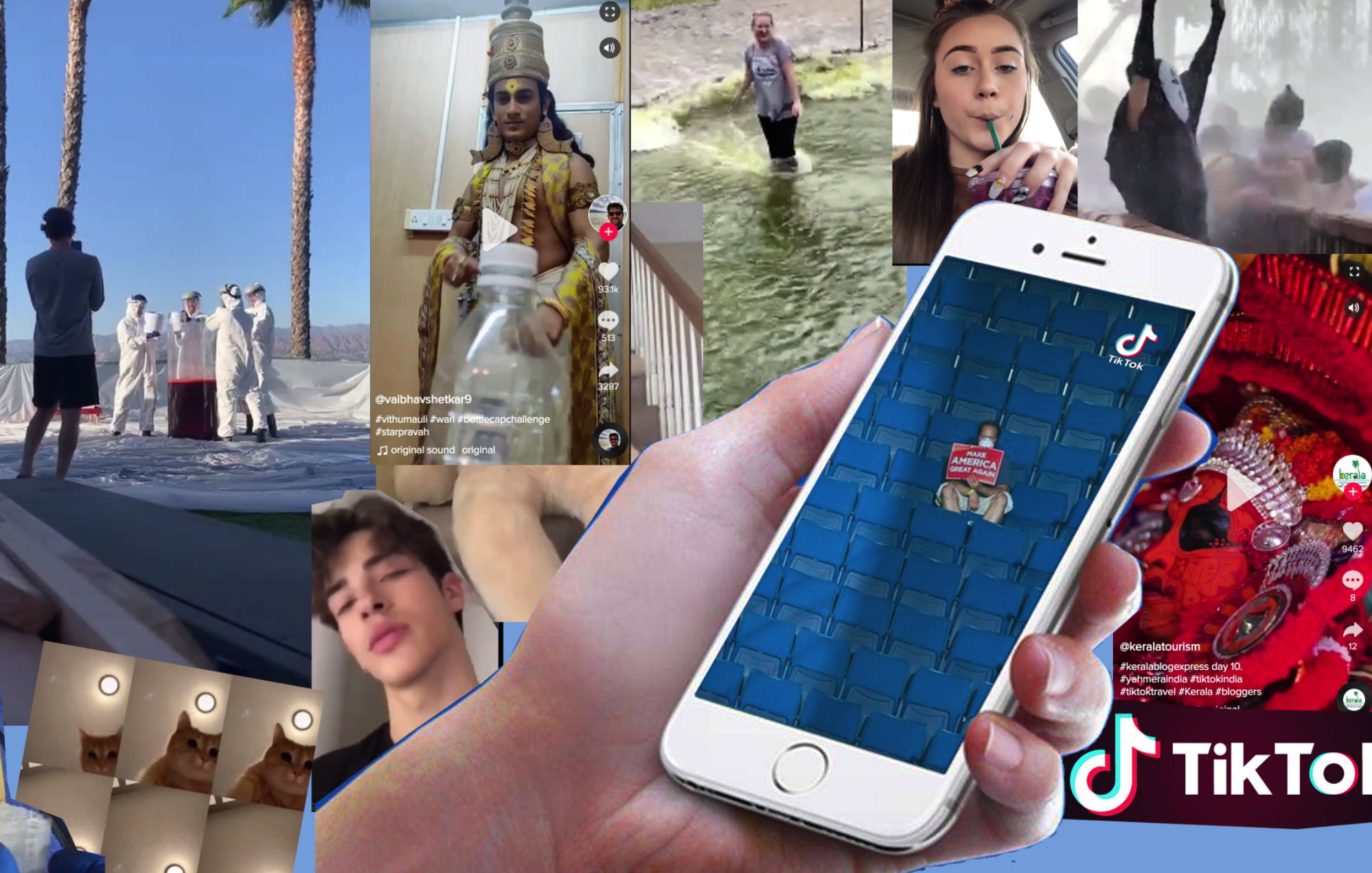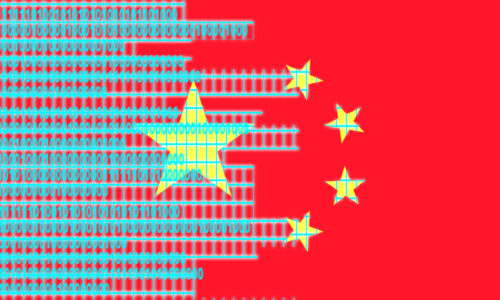“Nobody has ever heard numbers like this,” Donald Trump remarked in the days leading up to his campaign rally in Tulsa, Oklahoma. But after turning away a supposed 900,000 people due to lack of space, the president found the upper levels of his convention hall a sea of empty blue seats.
To his chagrin, Trump had fallen for an elaborate prank executed by Gen Z’ers and K-pop fans. The poetic irony of the situation is that the app used to organize this charade, TikTok, is an export from Trump’s long-antagonized bogeyman: China.
“If you’re looking for a window into contemporary youth culture,” writes Alex West of the Daily Intelligencer, “there is nothing better than TikTok.” He is not wrong — as of April, TikTok claims 10% of the world’s population as active users, 41% of whom are between 16 and 24 years of age. The average user devotes nearly an hour every day to the app, and over a billion videos have been viewed every day on it in the last year.
Amidst this sizable slice of the world’s population, few users are aware that TikTok is currently headquartered in China. TikTok’s parent company, ByteDance, is based in Beijing and has built an entirely separate app for its domestic audience with its own functionality and censorship policies. Fewer still are aware that these censorship policies have, in some form, been shipped abroad.
TikTok is now the only China-based app to gain significant traction overseas. As a result, its experience serves as a natural experiment in how foreign regulators react to such a situation.
TikTok’s history
TikTok was officially born in 2017, when an almost $1 billion merger between ByteDance and Shanghai-based Musical.ly produced the worldwide phenomenon that we know today.
TikTok’s platform is intuitive and highly addictive. Carrying on the legacy of the now-defunct Vine, the platform condenses user content into 2- to 60-second bits. Just like Vine, these constraints have produced an endless stream of entertaining user-based content. Where TikTok improves on the formula is its lip-syncing function, a piece of software imported directly from Musical.ly.
With a massive user base comes comparably sized revenue. In 2019 alone, according to Barron’s, TikTok produced “$176.9 million in revenue,” which was “71% of the total $247.6 million in revenue the app has ever generated.” It is not clear precisely how TikTok monetizes its content, but there are several known revenue streams — an in-app coin system, a variety of advertising options, and direct sponsorships for content creators.
TikTok and Douyin
If you operate a media-oriented company headquartered in Beijing (as ByteDance is), there are inevitably going to be a few hoops you have to jump through before you can “go global.” The first set of hoops is domestic: Your company has to follow Chinese Communist Party (CCP)-friendly practices to avoid catching the ire of General Secretary Xí Jìnpíng 习近平. ByteDance CEO Zhāng Yīmíng 张一鸣 learned this lesson the hard way, when in April 2018, he issued a groveling public apology for political errors in another ByteDance app, the news aggregator Toutiao, in response to immense pressure from the government.
Zhang slipped through this first set of hoops by segregating TikTok’s Chinese sister platform, Douyin (抖音 dǒuyīn), from its international version. Aside from a more overtly compliant censorship policy, Douyin has a range of superior features. As Jia Tolentino of the New Yorker explains, “You can buy a product featured in a video; you can book a stay at a hotel after watching a video shot there; you can take virtual tours of a city’s stores and restaurants, get coupons for those establishments, and later post geo-tagged video reviews.”
Furthermore, Douyin’s content is unique to China. Per Tolentino,
Douyin has an older user base and “now contains micro-vlogs, life-style content, business advice, and videos from local police. Selected users on Douyin can upload videos as long as five minutes. Fictional mini-dramas have begun to appear.” All of this has also led to a more reliable and profitable consumer base.
The second set of hoops is international, as you have to appeal to foreign governments and convince them that you do not compromise their notion of national security. This is not necessarily an easier task than convincing Beijing that you are not a political threat.
The world vs. ByteDance
TikTok hasn’t had the same splash landing abroad that Douyin has had in China. Its popularity isn’t the issue; TikTok’s largest user base is in India, with over 467 million downloads. Instead, the biggest impediment to TikTok’s astronomic growth is the Chinese government’s adversarial relationship with a number of wealthy foreign powers. The charges against it are twofold:
1. Invasive data collection
In 2019, Washington forced a Chinese tech startup to divest from the gay dating app Grindr, citing national security concerns. The fear was that since it was within the Chinese government’s power to extract any information it wants, Grindr’s inherently sensitive data could be used to blackmail U.S. government personnel or citizens. This case set an unfavorable precedent for TikTok, which collects a host of information like contacts, location, photos, and in-app messages.
As Justin Sherman of Lawfare explains, there are many ways a foreign power could creatively use this data to disrupt rival nations. Sensitive pictures and messages stored on a mobile device can reveal classified government secrets or, as mentioned before, be used for blackmail. Data on the general public can be used to target Beijing-sponsored ads and sway public opinion.
Whether this data actually gets accessed by the Chinese government is almost irrelevant. What’s more important to foreign regulators is the potential for that to happen. ByteDance hasn’t done itself any favors, though: TikTok already lost a class action lawsuit for its mismanagement of consumer data, and it will likely have to restructure itself if it wants to survive.
2. Censorship
In a speech at the recent virtual Copenhagen democracy summit, U.S. Secretary of State Mike Pompeo said, “CCP propagandists work hard to control information flows and speech to maintain their grip on power. They won’t be satisfied until the digital firewall extends to our nations too. In some ways, it already does.”
Pompeo may well have been thinking of ByteDance specifically when he said that. Leaked documents sent from ByteDance’s Beijing headquarters have revealed orders not only to censor “politically sensitive” content like the Tiananmen Square Massacre abroad, but also to algorithmically silence “ugly” or “disabled” users who might drive away traffic. Such policies have caused some governments, especially those that have a bone to pick with China, to spring into action.
Government backlash
In the U.S., Missouri senator Josh Hawley has taken up the crusade of passing a bill to ban TikTok from all federal government workers’ devices. That’s just the tip of the iceberg. TikTok also faces or has faced:
- A pending Committee on Foreign Investment in the United States (CFIUS) investigation that could potentially force ByteDance to sell TikTok or cease operations in the U.S.
- Bans in the Australian and U.S. military.
- A two-week country-wide ban in India that allegedly cost the app 15 million users.
All of this noise has spooked ByteDance into action. The startup has taken steps to “ring-fence” its TikTok operations teams from the rest of the company. It also allowed several independent U.S. law firms to review TikTok’s content moderation and privacy policies. Furthermore, ByteDance management has reportedly been scanning Singapore, among other locations, for a new TikTok headquarters with less CCP baggage.
So do we chalk this up as a win for the U.S. and its allies? Probably not. TikTok is in all likelihood just the first wave of a coming flood. The “TikTok question” will come up again as more Chinese firms invest globally and China-backed apps become commonplace. Regulators have to create a sound framework for how they want China-based companies to operate within their borders. Figuring out what to do about TikTok will be a good start.







